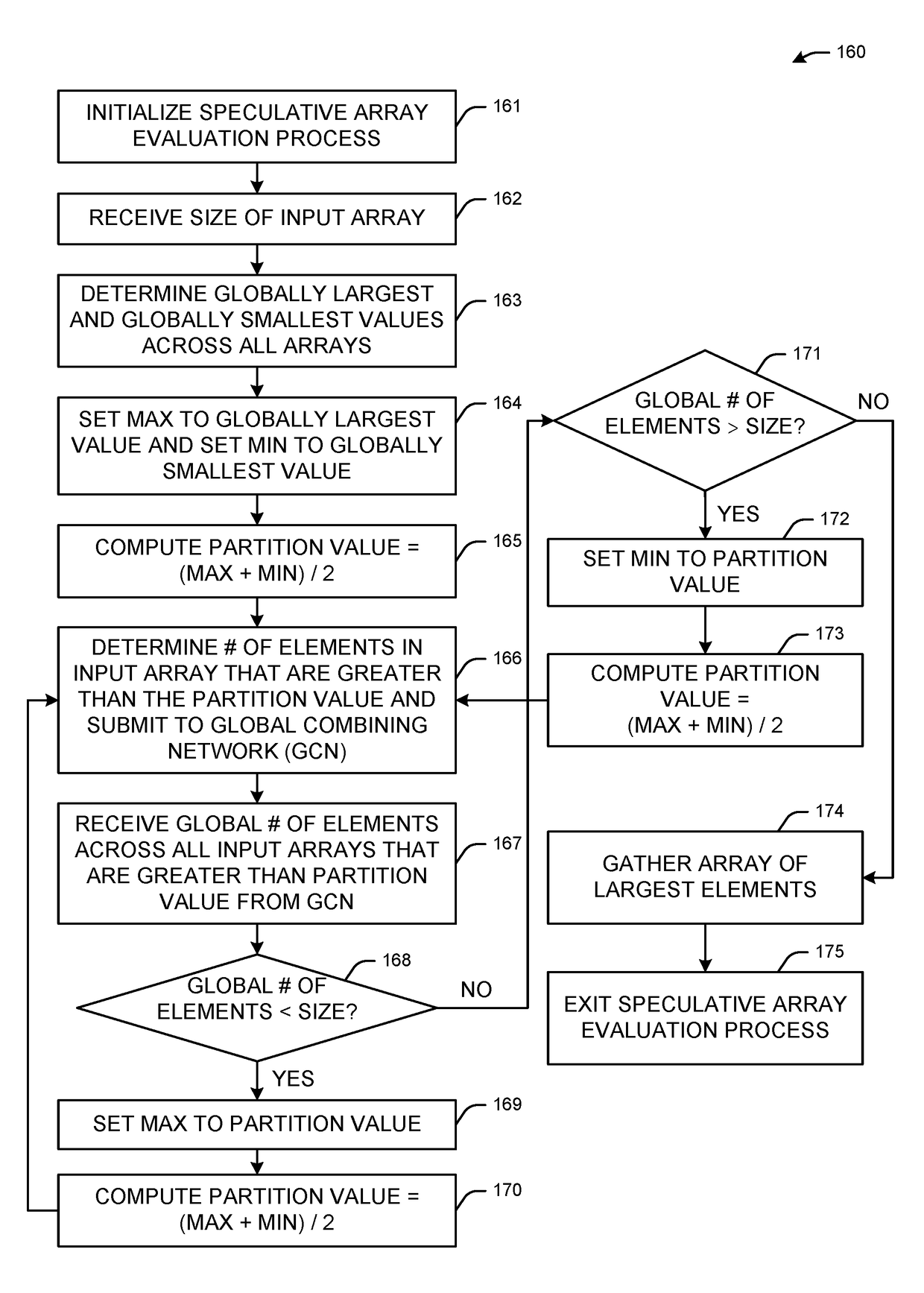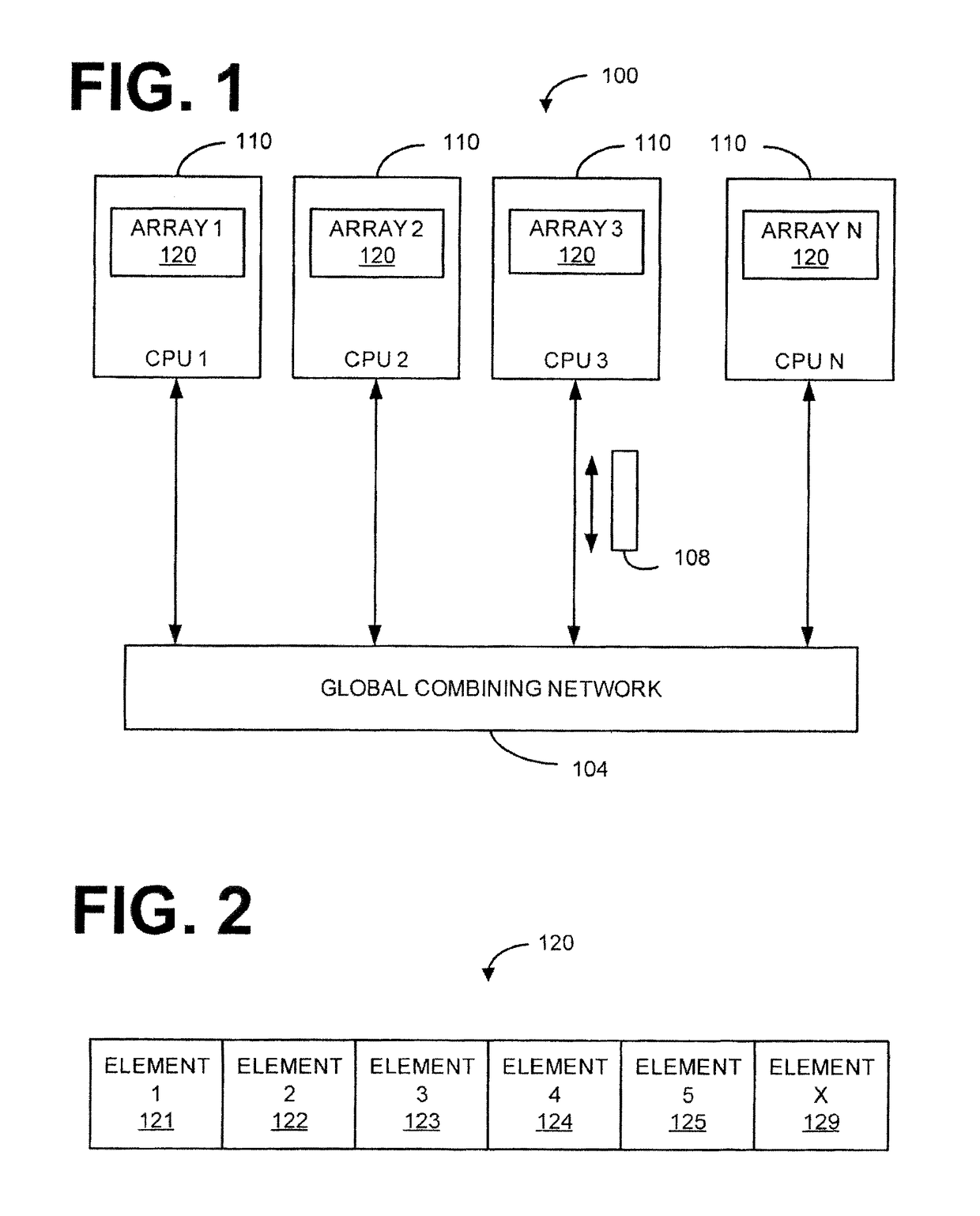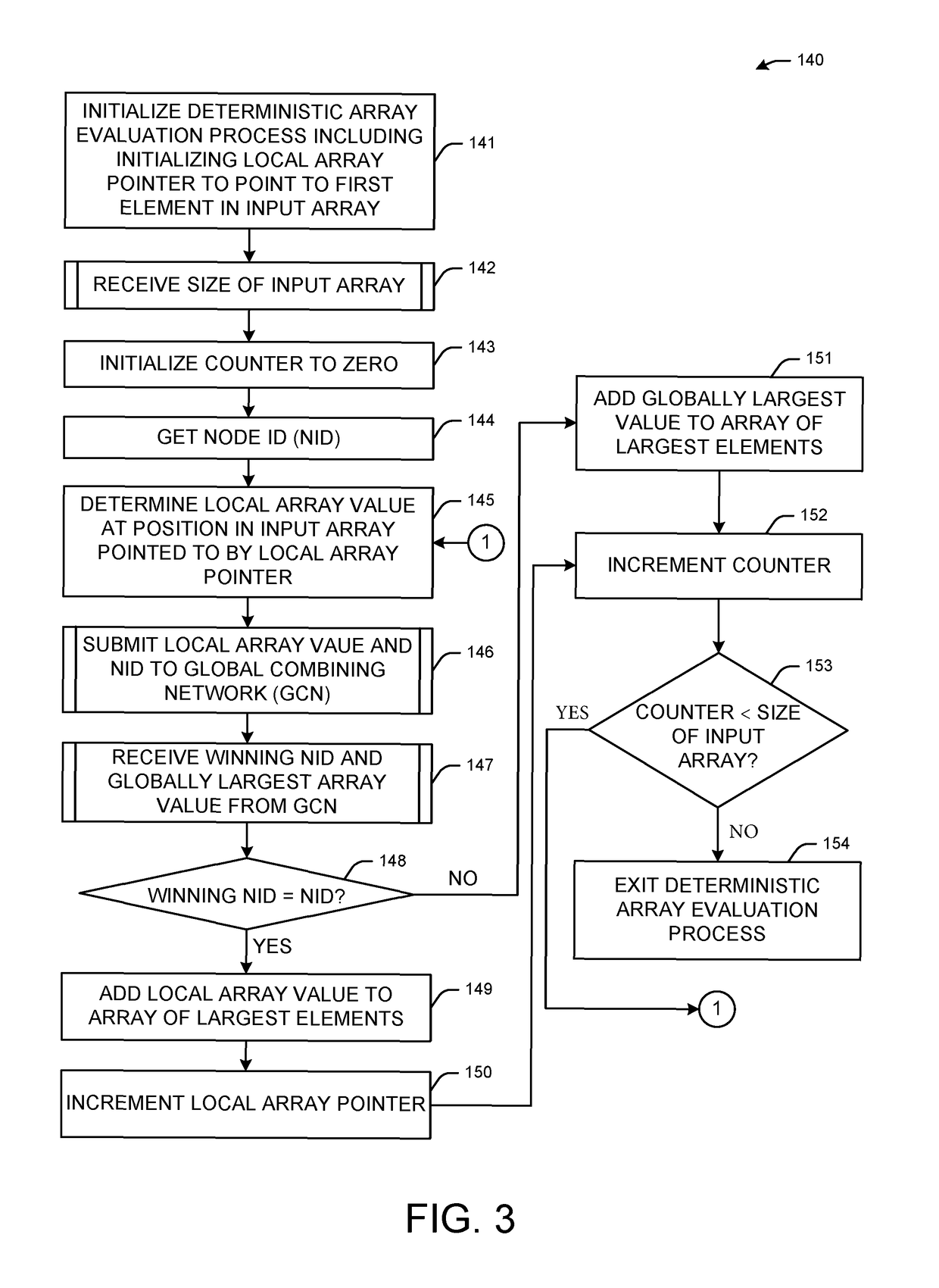Parallel, low-latency method for high-performance speculative globally-large element extraction from distributed, sorted arrays
a global-scale, element-extracting technology, applied in the field of array processing, can solve the problems of large amount of memory, no particular efficiency, and inability to scale well with gather operations
- Summary
- Abstract
- Description
- Claims
- Application Information
AI Technical Summary
Benefits of technology
Problems solved by technology
Method used
Image
Examples
Embodiment Construction
[0015]The invention addresses problems with massively parallel supercomputers. In certain large-scale parallel applications, it is sometimes helpful to be able to find the globally largest N items out of distributed lists on P nodes.
[0016]One such example where this operation of combining the globally largest N items out of the distribution list on P nodes is important is in the area of biomolecular simulations to study protein science. The life sciences are receiving special attention because the field is demonstrating explosive growth, and the life sciences are creating what will become one of the most significant industries of the new century. Indeed, with advances in bioinformatics and genomics, high-throughput screening of drug candidates, and ready access to information on the Internet, the life sciences have benefited from computational capabilities and will be driving the requirements for data, network, and computational capabilities in the future. The particular area of pro...
PUM
 Login to View More
Login to View More Abstract
Description
Claims
Application Information
 Login to View More
Login to View More - R&D
- Intellectual Property
- Life Sciences
- Materials
- Tech Scout
- Unparalleled Data Quality
- Higher Quality Content
- 60% Fewer Hallucinations
Browse by: Latest US Patents, China's latest patents, Technical Efficacy Thesaurus, Application Domain, Technology Topic, Popular Technical Reports.
© 2025 PatSnap. All rights reserved.Legal|Privacy policy|Modern Slavery Act Transparency Statement|Sitemap|About US| Contact US: help@patsnap.com



